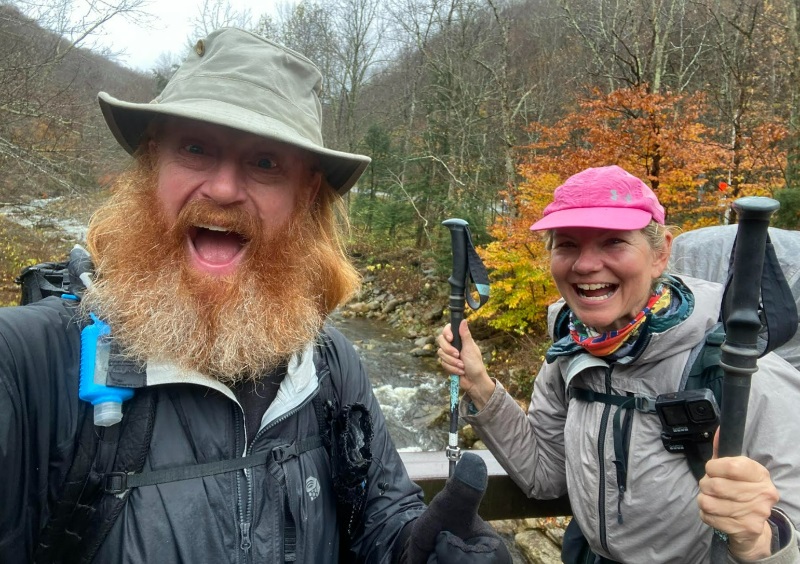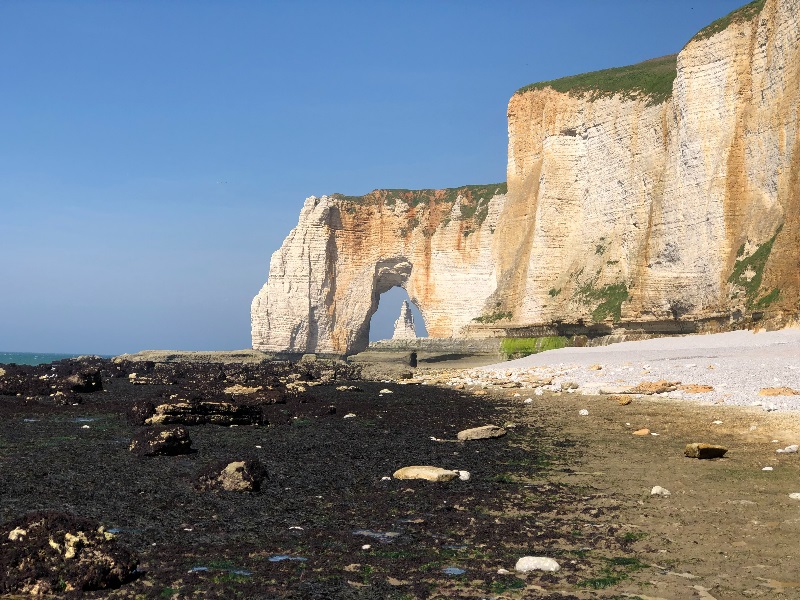Travel
WCI Travel Club: Momentous Trips to the Appalachian Trail, Washington DC, and Tokyo/Paris | White Coat Investor
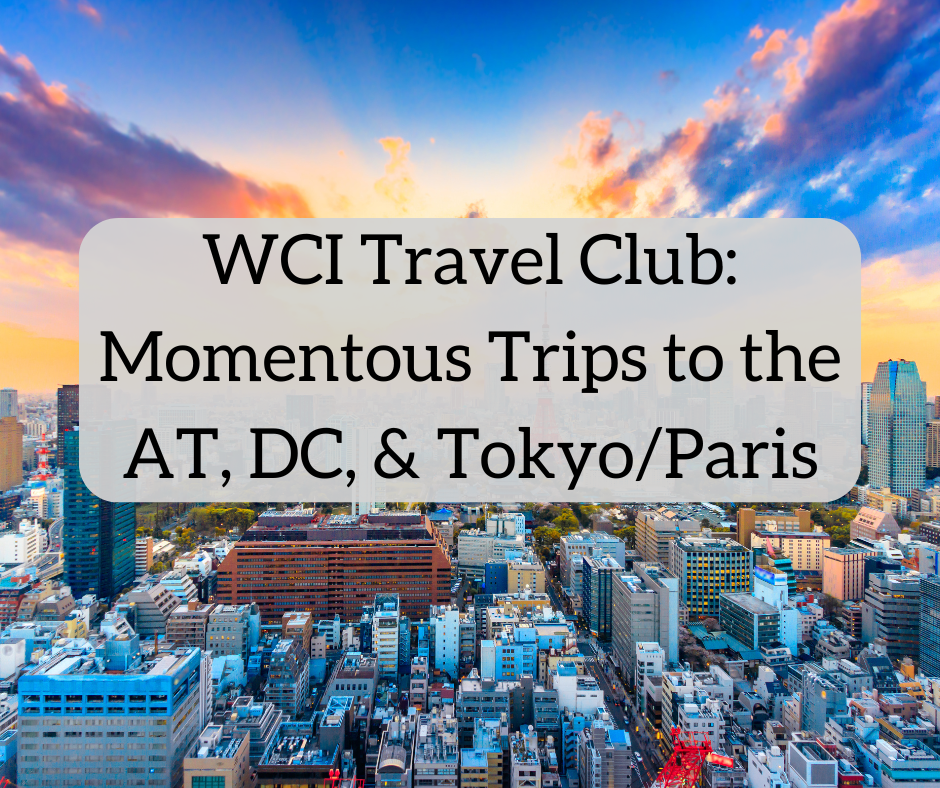
By Josh Katzowitz, WCI Content Director
We started a new feature here at The White Coat Investor last year, writing about our travel adventures and what lessons (financial or otherwise) we learned while experiencing them. Whether it’s WCI Founder Dr. Jim Dahle writing about climbing to the top of the highest point in Wyoming, guest writer Michael Mulick describing how his working trek to Sudan reinvigorated his career, WCICON23 keynote speaker Stacy Taniguchi reliving his nearly disastrous mountain trek on Denali, or guest writer Dr. Liz Aarons learning the harsh reality of a goat in Peru, there is value in learning from others’ world-traveling wisdom.
We call this WCI Travel Club, and so far, Tyler Scott has penned his thoughts about Thailand, credit card points, and the power of a 100% tip; Margaret Curtis has written about her Alaska; and Anthony Ellis has described his time walking Camino de Portugues. Today, we unveil our third edition of WCI Travel Club.
Before we get to the new travel essays, though, I again want to invite all readers to share their experiences with the community. If you have undertaken a trip that taught you lessons about finance, mental wellness, or some other aspect of medicine or life, I’d love to hear from you so that we can include your story in subsequent WCI Travel Club columns. These essays can be inspiring, or they simply can be a nice break in the day so our readers can be transported to other parts of the globe. After all, the outside world is always there to teach us lessons.
If you’re interested in submitting your own WCI Travel Club essay, email me at [email protected] so we can discuss it. It thrills me to publish these columns a couple of times a year.
A Walk in the Woods from Georgia to Maine
 By Dr. Scott Calder and Shari Calder, Guest Writers
By Dr. Scott Calder and Shari Calder, Guest Writers
After 35 years in the military, I fully retired and did extraordinarily little for six months, primarily because I was feeling burned out. I had thought for years about hiking the Appalachian Trail (AT) in retirement, and as I got closer, I read books, watched YouTube videos (including the through hike of a retired vice chairman of the Joint Chiefs of Staff and his wife), took Air Force survival training, and backpacked for seven days (as a Boy Scout). I decided it was time.
I spoke with my wife, who shocked me by wanting to come. I knew she could hike 2,193 miles. She is an epic day hiker, but she does not like camping. Shari has always been in superb shape, but I was a blob (remember those six months?) so my fitness was poor when we started. Our inexperience turned out to be the norm. Two-thirds of attempted AT through hikers had backpacked a total of seven days or less in their lives—surely a major reason for the 25%-30% success rate. Plus, it is just hard! Most people envision the AT as remote wilderness. There are remote sections, but most of the trail is not. Help is a phone call away, and more times than not, the trail has cell reception.
My pack weighed 20-30 pounds with food. I carried our tent, and we both carried our sleep system, a water filter, a basic first aid kit, and only two sets of clothes: hiking clothes and sleeping clothes. In the colder months, there were more layers, but most hikers had two sets of clothes.
Nearly seven months later, what I learned was:
- It was cheaper than we expected and, in fact, cost less than our normal living expenses.
- I didn’t appreciate the depth of my burnout; taking time for myself was invaluable
With our backpacks and hiking poles, we registered at Georgia’s Baxter State Park on April 2, 2021. Before we could start on the AT, we had to hike the eight-mile approach trail. Along the steep climb, we saw someone end their attempt at a through hike—literally before it even began! We arrived at the AT start with the plan to camp overnight, but this changed when evening temperatures were below freezing. We did not want our first night to be a test of our wintry weather tolerance, so we called for a ride to the lodge (and back the next morning). Traditionally, hikers start at the bottom of the approach trail because the road to the AT requires a rugged 4-wheel drive vehicle.
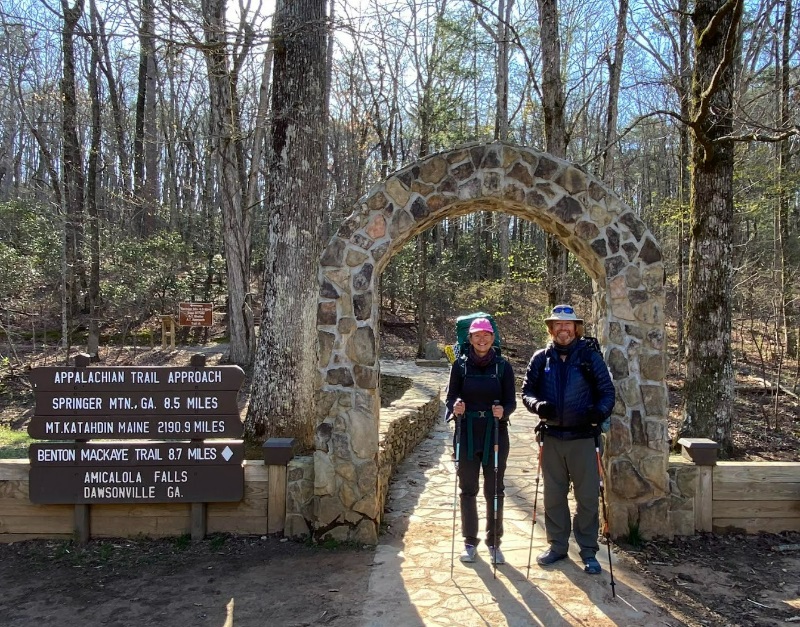
Scott and Shari at the beginning of the Trail. Enlarge the photo to note the length of Scott’s beard.
The first 30 days on the trail were tough physically (for me), but after the first month, I was 100% sure we could complete our hike. We had mental toughness, and I had gained fitness. But injuries worried me (it’s the No. 1 reason people end their hike). I fell well over 100 times—sometimes hard—so the risk was real. Everyone falls on the trail, because, for much of the hike, you are walking on tree roots and rocks (plain dirt is somewhat rare). Combine that with uneven terrain, muddy conditions, and wet rocks, and falling is far too common. Even more common for me as I have been clumsy my whole life!
Most people believe bears are a danger, but while sightings are not uncommon, attacks are exceedingly rare. Hang your food bag between two trees, and the bears will look for easier opportunities. Injuries, lightning, and hypothermia are the biggest dangers on the trail. It rains regularly along the entire trail, and you cannot take off all the rainy days. Usually, the rain was short-lived, and you dried out as you hiked. However, there were days with prolonged rain, high winds, and cool temperatures—perfect for hypothermia. One such day, we were getting cold. We recognized the danger and stopped at the next shelter, hung our clothes, and got under our sleeping quilts. It took a while to warm up, but when the rain stopped, we were ready to go hiking again.
“Hiking the trail is like going to work.”
We heard this many times, and it was so true. Get up, hike for 8-12 hours, set up camp, wipe yourself down, eat dinner, and go to bed. Lather, rinse, repeat! Breakfast on the trail was a breakfast bar or two, lunch was tortillas with peanut butter or pepperoni/cheese, dinner was a tuna packet mixed in ramen, and dessert was a candy bar. We had three choices of sleeping arrangements: our ultra-light 1.3-pound tent that can fit a queen mattress and has a 48-inch high peak, a wooden open-air shelter, or a bed. There are many hostels and hotels near the trail, so we tried to sleep in a bed every 3-4 days. The bed came with a shower, laundry, and town food!
My feet hurt every day (it turned out to be Morton’s neuromas), and this significantly slowed our pace. We hiked as much as 23 miles in a day, but 10-15 miles was typical (the amount of climbing to be done and sleeping locations drove the distances we hiked). The views were spectacular, and there was a great community of people. But after seeing the horrific injuries caused by war (both physical and mental) while deployed as a surgeon and a commander and dealing with the intense pressures of working for four-star generals during my last several assignments, the trail time by myself was also great (my wife was a much better hiker than I was, so she often went ahead and established camp).
It was a time to reflect, clear my thoughts, and enjoy “me time” after years of playing extrovert at work.
After summiting Mount Katahdin in Maine, we got a ride back to our hostel and then headed south again. We finished in Vermont on October 30 after 200 days of hiking 2,193 miles. We climbed 470,593 feet and used eight pairs of shoes. And it was bittersweet. We were ready to stop hiking 8-12 hours each day, but the views and trails were so beautiful. As a bonus, we hiked the last few weeks with another couple our age, which was wonderful.
Since this is a financial blog, let’s break this down. Together, we spent $15,168 on equipment, lodging, and travel and another $10,049 on food. While $25,217 for the two of us sounds high, this was nearly our entire expense for seven months (36% of normal). Nearly all of our stuff was in Air Force-paid storage (bonus!). We paid for insurance and had no rent or mortgage.
Hiking the AT can cost less, but we were living the rich life on the trail. It was worth every penny for an adventure of a lifetime.
Rebounding from the ‘Trip from Hell’
 By Dr. Julie Alonso, WCI Columnist
By Dr. Julie Alonso, WCI Columnist
My family and I recently took a long weekend trip to the Washington DC area. It wasn’t the most exotic of destinations, but it was a very meaningful and cost-effective trip. Why was it such a worthwhile experience for us?
We prioritize travel and experiences over physical things. We’ve always made it a point to attend weddings; celebrations; high school, med school, and residency reunions, etc. I’ve written about how meaningful it was for us to bring our family and friends together to celebrate a once-in-a-lifetime coming-of-age moment in our lives. This was the complete opposite opportunity—a trip where we get to see the sites and catch up with dear friends and family is one we would not want to miss. I see this as maximizing our experience at a reasonable cost of about $2,000 for the four-day weekend.
My cousin was getting married in northern Virginia, and I knew this would be another all too infrequent chance to see so much of my extended family who all live far away in the Northeast. Some of these family members are elderly and not in good health, making traveling closer to them the better option. When we found out that the winery where the wedding was booked was in the same town as my husband’s cousins, the draw to go got even bigger. They lived just four miles away from the venue. The clincher was getting to attend a joyous occasion while seeing both sides of our families.
Since my children would not be at the actual wedding of my cousin, they could still have fun hanging out with my husband’s cousins that evening. Although it wasn’t the most convenient time since school was in session, we decided to pull them out for two days to make the trip worthwhile from both a time and money standpoint. My twins were taking US History that year in eighth grade, and combined with a pandemic-fueled obsession with Hamilton, their interest in seeing DC was piqued. We decided that it would be worthwhile to do a whirlwind 24 hours of touring DC proper at the end.
Their only prior trips to DC were when they were 5 months old for a wedding and when they were 4 years old for a trip to see the sites and visit family and friends. The latter trip was one that my husband and I have come to affectionately call the “trip from hell.” My daughter, son, and I all got conjunctivitis and a flu-like illness, resulting in my son being hospitalized in the PICU overnight at Children’s National Hospital. There were also eight separate episodes of vomiting (none of them occurring anywhere near a toilet), including all over the car seats, a parental nightmare.
This time, we were determined to reconcile with the city from our former trip. And I’m happy to say that we did.
Besides the continual joking of “kids, this is what we call fall,” the weather truly was crisp and beautiful. This is something I greatly miss having grown up in the Northeast and now living in Texas. We had a lovely time staying with my husband’s cousins, seeing their beautiful home, and getting to know their kids better. An added bonus was avoiding the cost of a hotel (it would have been about $170 per night). In addition to the wedding itself, we visited with all of my cousins at the hotel and for brunch, getting to spend some real quality time together.
On the last leg of our four-day trip, we headed to DC to spend the rest of our time there exploring and catching up with a dear friend. In less than 24 hours, we saw the White House from the outside (my son’s top request), the Natural History Museum, the Capitol, the Mall, the Washington Monument, the World War II Monument, the Lincoln Memorial, the Vietnam Veteran’s Memorial (especially meaningful since my father is a Vietnam Vet), the Air & Space Museum (a highlight for my airplane-obsessed husband on his birthday), and the Museum of African-American History and Culture.
My friend, who has lived in DC for years, was a gracious host and tour guide. Our daughters bonded over a mutual love of Taylor Swift, and we regaled all four children with stories of our high school escapades. Seeing our children cooking and laughing together was enough to fill my cup to the brim. We ended the evening with a delicious Asian-Italian fusion meal and a cake + champagne toast to my husband on his birthday eve before we saw some final sites and flew home later the next day.
All this in just three nights away from home for $2,000? Sign me up to do it again.
Taking the Road Less Traveled Can Bring Peace of Mind
 By Dr. Francis Bayes, WCI Columnist
By Dr. Francis Bayes, WCI Columnist
When one visits a country for the first time, the “must-see” landmarks in major tourist destinations are hard to resist. Think the Louvre, Buckingham Palace, and Shibuya Crossing. They are famous for a reason. But with one train ride or rental car, travelers can explore surrounding cities or regions that make their trip memorable and distinct. The locations might not be considered the “road less traveled,” but they’re still not on the radar of the most well-traveled person in one’s circle.
Over a year’s time, my wife and I visited two such places when we traveled to Paris and Tokyo.
After my parents, wife, and I spent some time together in Paris, we went on a road trip in the Normandy region. Normandy is famous for Omaha Beach, William the Conqueror, and Mont Saint-Michel. For fans of art, Claude Monet’s house and garden are in Giverny. But even Monet aficionados might not know that the Rouen Cathedral and the cliffs of Etretat (both of which were subjects of his paintings) are also in Normandy.
In fact, I had my Good Will Hunting “Sistine Chapel” moment as I stood in front of the Rouen Cathedral at sunset and watched the light reflect off its facade at different angles. I learned from visiting different museums that Monet painted the Rouen Cathedral, haystacks, and water lilies in a series (i.e., multiple paintings of the same subject) to capture light at different times of the day. In Rouen, I experienced what Monet might have painted.

Claude Monet’s Rouen Cathedral at sunset, painted in the early 1890s.
Although Normandy might not be as popular as other regions, a Google search still yields plenty of guides for a multi-day road trip. Beyond sights for art and history buffs, Normandy also has affordable fine dining and beautiful coastal towns—such as Saint-Malo and Honfleur, which are about an hour away from Mont Saint-Michel and Etretat, respectively. Normandy will inspire future European road trips, especially now that many European car rental companies offer cars that comfortably fit four people and have automatic transmissions.
In a similar vein, after my wife and I stuffed ourselves with ramen, udon, and various street food at the Tsukiji Market in Tokyo, we took a two-hour train ride to Nikko for a two-day trip. Nikko was the religious center of Japan during the Tokugawa Shogunate, which preceded the rapid modernization of the Meiji Era, and it is now a UNESCO World Heritage Site. At the Asakusa station in Tokyo, one can buy a Nikko Pass, which includes round-trip train tickets and a bus pass in Nikko, and the staff at the tourist information center offers helpful advice in English.
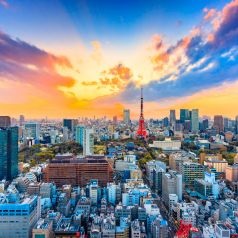
In Nikko, we had no shortage of activities. We strolled along a river seeing more statues of Buddhist monks than tourists, visited waterfalls near the highest-elevation lake in Japan, and wandered among the treasured shrines and temples without an itinerary for the day. The unreliability of Google Maps during the low season allowed for serendipity as we discovered a yakitori stall operated by a husband and wife as well as a sukiyaki restaurant that is also an art gallery. We could have taken the time to visit some of the popular hot springs in the area, but we chose to take a bath in our Airbnb instead.
Some people cannot just relax on a beach during their vacation, but foreign metropolitan areas like Tokyo–with its scale of public transportation hubs and lines of customers at popular restaurants–could overwhelm even a New Yorker. The anticipation of travel tends to fuel the first few days of vacation. Although I am a “maximizer” who wants to see, eat, and do everything available and possible, Nikko provided some relief from Tokyo and allowed me to immerse myself in the history and nature of a smaller city. Nikko will be a reminder to plan my last day of vacation as a “buffer day” so that I can simply enjoy being present.
Even maximizers need to allow their mind and body to relax right before they must return to work.
More of WCI Travel Club:
Meaningful Trips to Half Dome, Thailand, and Alaska
Magical Trips to Peru, Portugal, and Disney World
Do you have your own travel stories where you learned a lesson? What else have you gained from your journeys? Comment below and/or email me!
[Editor’s Note: For comments, complaints, suggestions, or plaudits, email Josh Katzowitz at [email protected].]



